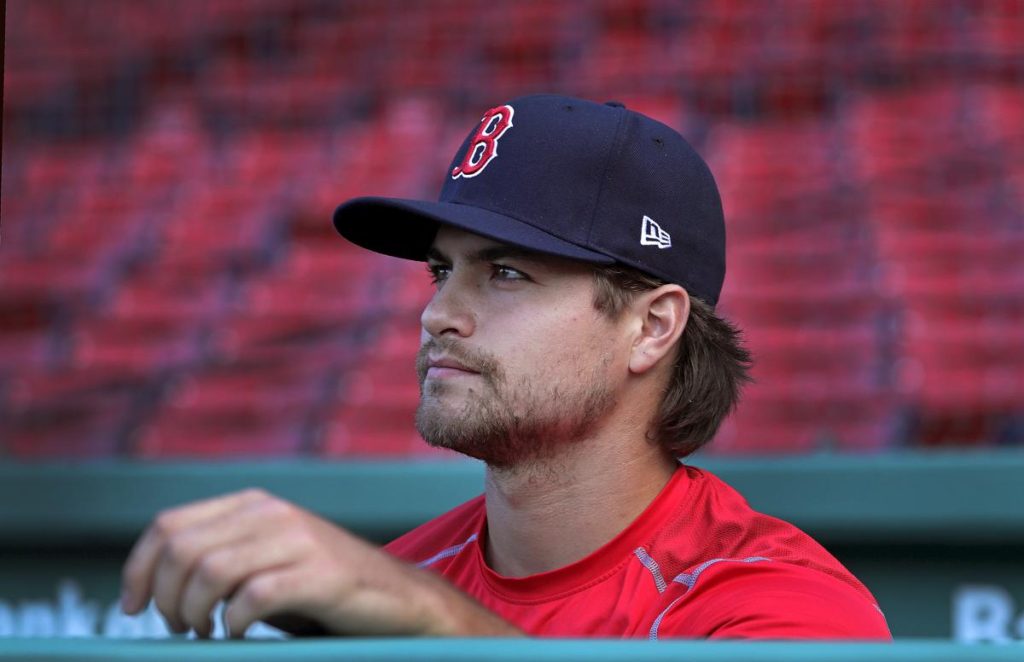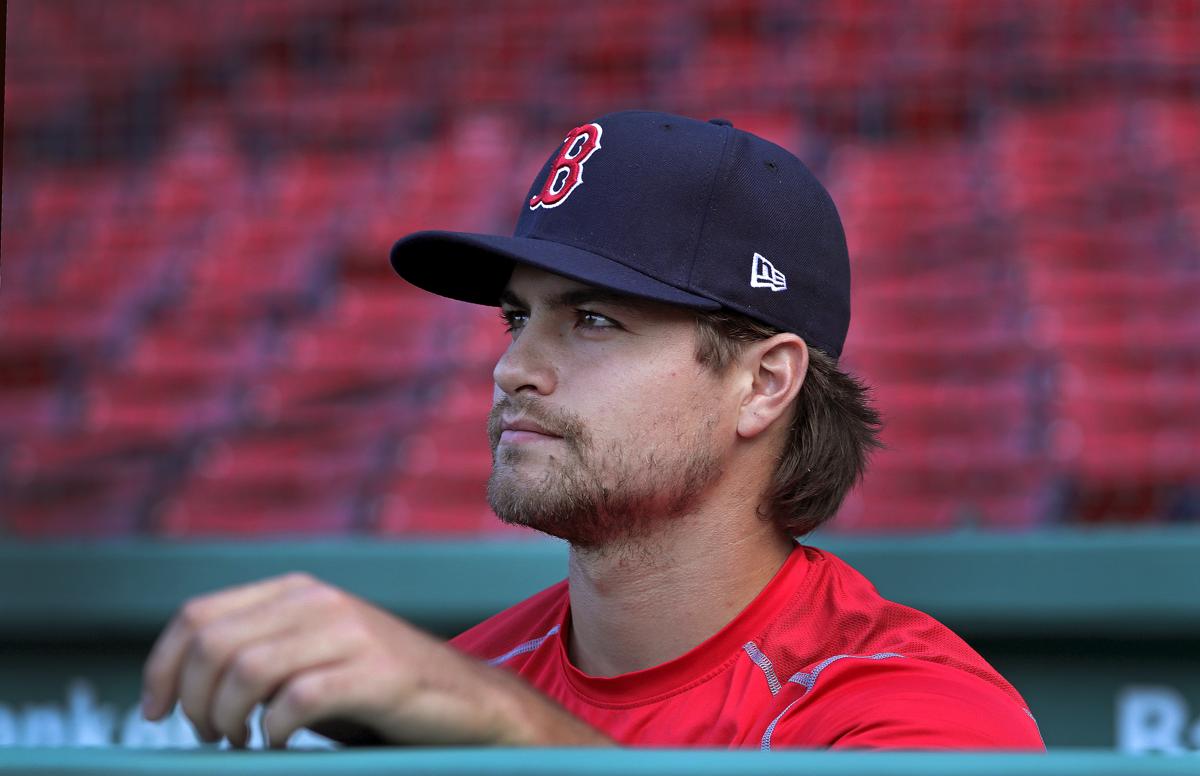
The Tampa Bay Rays were not done wheeling and dealing on Wednesday, as they traded right-handed pitcher Matt Andriese to the Arizona Diamonbacks late this afternoon. In return, Tampa Bay has received two minor league prospects: catcher Michael Pérez and RHP Brian Shaffer.
We’ve traded RH Matt Andriese to Arizona in exchange for C Michael Pérez and RH Brian Shaffer.
— Tampa Bay Rays (@RaysBaseball) July 25, 2018
Originally acquired from the San Diego Padres as part of a seven player trade in 2014, Andriese worked to a 3-4 record and a 4.07 ERA in 27 appearances this season. The right-hander was situationally consistent, doing better as a starter, performing to a 3.18 ERA, as compared to a 4.28 ERA out of the ‘pen.
The team is reportedly high on the pieces they received for Andriese, particularly Pérez who will join the team immediately in Baltimore.
New C Perez will join #Rays in Baltimore on Thursday and Adam Moore will be DFA’d
— Marc Topkin (@TBTimes_Rays) July 25, 2018
Haul for TB in Andriese trade: headliner is C Michael Perez. Fits TB type of close to MLB, contact/defense, up the middle. 55 glove, elite framer by multiple team metrics, improved D this year. 55 hit, contact type with some power, likely backup type but maybe a little more.
— Kiley McDaniel (@kileymcd) July 25, 2018
Pérez, 25, is highly regarded for his defensive prowess as well as his ability to hit right-handed pitching. He’s gunned down 34.8% of would be base stealers this season, and is slashing .284 BA/.342 OBP/.417 SLG/.759 OPS/.338 wOBA/99 wRC+ with nine doubles, six homers and 29 RBI in 58 games for Triple-A Reno. He is a career .246 BA/.321 OBP/.396 SLG/.717 OPS hitter over 572 games across eight Minor League seasons. Pérez was drafted by the Diamondbacks out of high school in 2011.
RHP Brian Shaffer is somewhat generic depth arm/swing man: 89-92 t94, fringe to avg slider, avg change sometimes a little better, durable 6’5/220, throws strikes & performing this year but almost 22 in Low-A. Perez probably a 40+ FV, Shaffer probably a 35+ FV.
— Kiley McDaniel (@kileymcd) July 25, 2018
Shaffer, 21, is 7-5 with a 2.70 ERA in 19 starts for Class-A Kane County this season. He has struck out 109. The right-hander boasts a low-to-mid 90s fastball with natural sinking action that could play at the next level. Over parts of two Minor League seasons, Shaffer is 7-5 with a 2.82 ERA in 32 outings (29 starts). He was a sixth-round draft pick by Arizona in 2017 out of the University of Maryland, where he played ball with Rays minor league prospect Brandon Lowe.
On Jalen Beeks
In return for Nathan Eovaldi, the Rays received 25-year-old southpaw Jalen Beeks from the Red Sox — the organization’s number six prospect according to Baseball America (BA).
Beeks is 34-28 with a 3.63 ERA in parts of five Minor League seasons, including a 5-5 record and a 3.29 ERA with Triple-A Pawtucket this season. He had two appearances for Boston in 2018, but he didn’t fare too well. In his first start against Detroit, Beeks allowed six runs over four innings of work, and in a relief appearance against the Rangers he allowed three runs in 2-1/3 innings.
Jalen Beeks
2018 Triple-A K%: 33%
2018 Triple-A BB%: 7%Blake Snell
2017 Triple-A K%: 32.6%
2017 Triple-A BB%: 9.9%#Rays pic.twitter.com/WSUpPuosVp— Michael Bradburn (@MWBII) July 25, 2018
Yet in in Triple-A, he was named to the All-Star Game thanks in part to a 33% strikeout rate which leads qualified pitchers in the league. He’s also only walking seven percent of opposing batters.
Rays GM Erik Neander lauded the southpaw for his “deep repertoire” and his ability to “pitch,” which accounts for his high strikeout numbers.
He’s had the two Major League experiences. Obviously, those didn’t go very well, and those aren’t our expectations moving forward. Somebody with a deep repertoire, he commands, he competes. He’s a guy we think has a chance to be a Major League starter, and we’ll see where things go.
Stuff wise, Beeks previously relied on a two-seam fastball and a slider at the start of his career, although he currently relies on a 92 mph four-seam fastball, a whiffy 86 mph changeup, a 75 mph curveball with sharp downward bite, and an 88 mph cutter with good “rise,” which has aided in his growth.
He can ride the fastball, he can move it in and out, Neander said. … There’s glove-side command, there’s arm-side command, and there’s feel to elevate. He’s got a cutter. He’s got a curveball. He’s got a changeup. There’s a lot of mix. There’s a lot of setting up. There’s a lot of sequencing.
His strikeout rate improved from 19.1% in 2016, to an impressive 25.6% last season. This in spite of the fact that he doesn’t really have a true put-away pitch.
I don’t necessarily think right now he has a go-to strikeout pitch that he can lean on, Neander said. I think a lot of those strikeouts in Triple-A have been more of a product of pitching and setting guys up.
As Scott Grauer (DRaysBay) writes, reports from BA and MLB.com indicate Beeks has a projection of a back-end starter. MLB.com also notes that, in the past, his stuff has declined later in games, which means he could be a fit for the team’s unique pitcher usage tactics.
Neander wants to see what the ever evolving Beeks can do at the big league level.
With a guy like that, I think it’s essential to give him an opportunity to get feedback at the Major League level, to better learn what sequences work, what sequences don’t. Where the strike zone is, etc. And there’s no real substitute for getting that opportunity.
And Beeks may just get that opportunity this weekend.
We’re talking through it right now, but I think there’s a decent enough chance that he joins us in Baltimore, Neander said.

